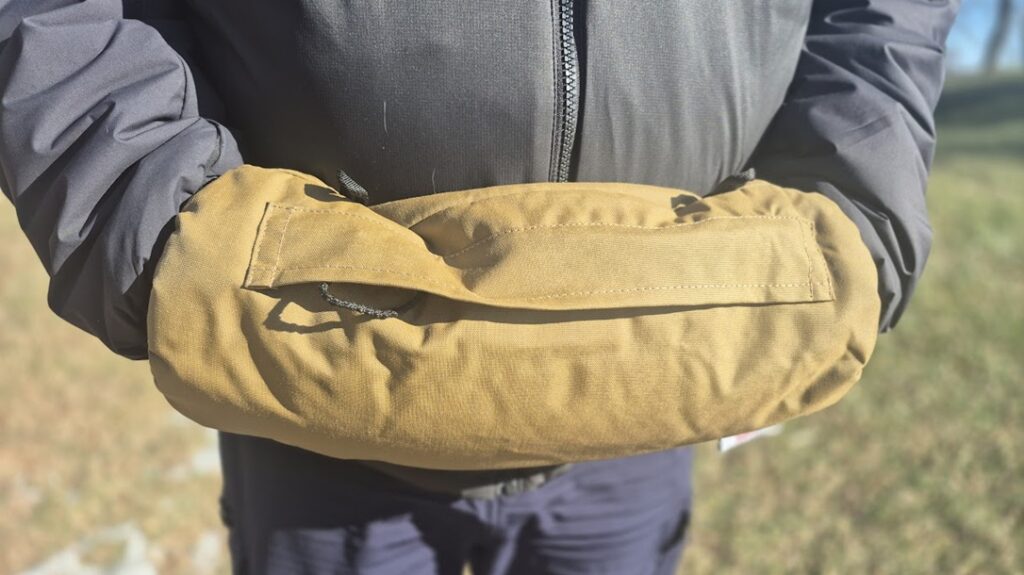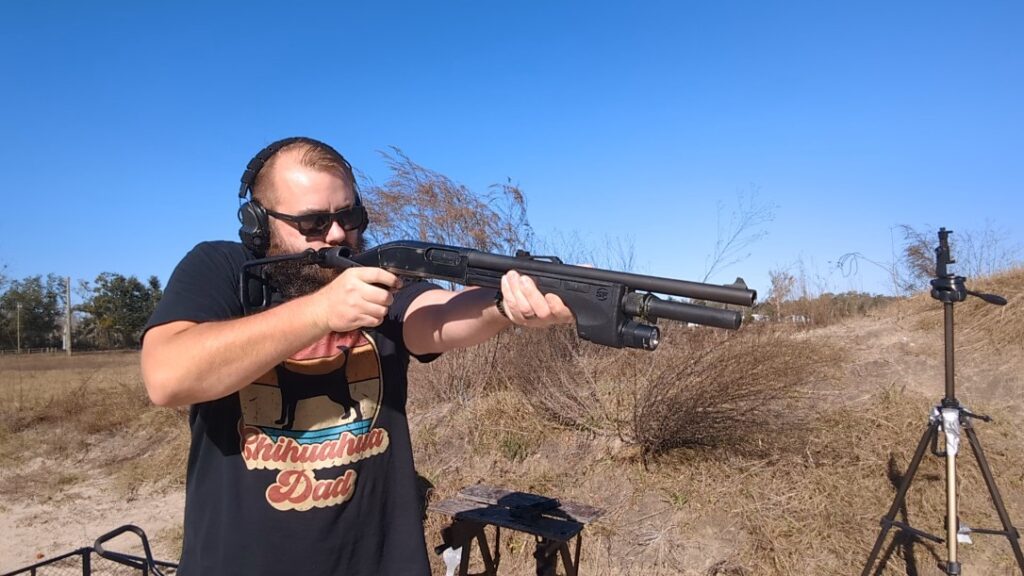Surefire’s story goes back further than the name Surefire. Surefire started in 1979, but it wasn’t called Surefire. The original company, Laser Products Corporation, focused on producing laser aiming tools. I covered their famed contribution to the Terminator film. However, there was a fortuitous shift in 1985 with the creation of the LPC Model 310.
Today, Surefire’s laser technology is exclusively integrated into its weapon lights. While Surefire also produces suppressors, iron sights, handheld lights, batteries, and more, its weapon-mounted lights have become its signature. The journey to this point began with the LPC Model 310, a significant milestone in the company’s history.
The LPC Model 310 wasn’t the first weapon-mounted light—that credit likely goes to the Wespi searchlight. However, it was arguably the first modern design and laid the groundwork for handgun weapon lights and weapon-mounted lights in general. Historically, soldiers have always found ways to make due, sometimes involving duct tape and hose clamps. Surefire made it possible to attach lights before pic rails were cool.
Advertisement — Continue Reading Below
Introducing the LPC Model 310
The success of Surefire can be attributed in large part to the ingenuity of Ed Reynolds, a key figure in the company’s creation. Reynolds, the mastermind behind the laser used in the Terminator film, also conceptualized the LPC Model 310. His vision for a weapon-mounted light for handguns was brought to life with the support of Dr. John Mathews, the President of Surefire, who immediately recognized its potential and approved its production.
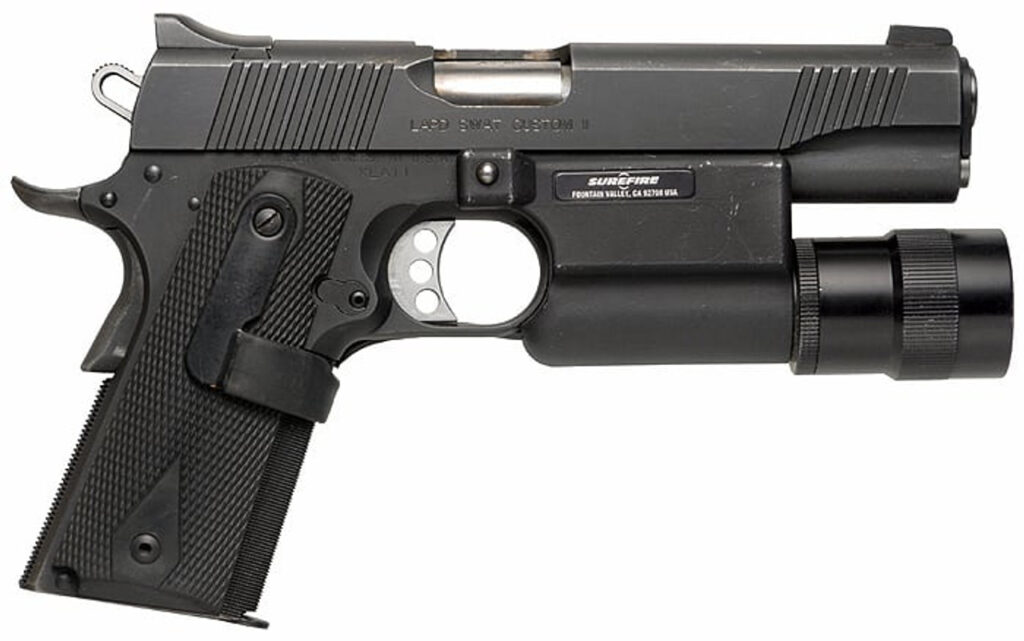
Much like the Terminator laser, this was due to a customer need. This time, it was for real-life badasses, not pretend movie ones. A Newport Beach SWAT team member came to Ed in need of a light mounted to a handgun. Today, we’d slap a light on a pic rail and call it a day, but this was way before pic rails made their way to handgun dustcovers.
Advertisement — Continue Reading Below
Creating a weapon light for a handgun was a serious challenge, especially for a company that didn’t make lights. Ed took up the challenge and began producing prototypes. He started with a wood mockup and later created investment-grade cast bodies. This allowed him to create a specific footprint to attach a light to a 1911 without a rail.
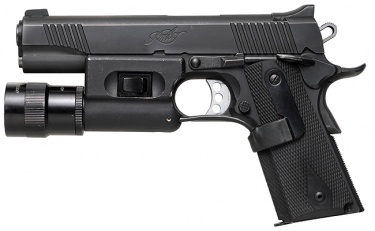
They faced several logistical issues, including securing light heads, bodies, etc. Safety concerns with batteries inside a recoiling weapon also existed. This led Dr. Mathews to create a solution and hand it over to a battery manufacturer. This battery became known as the CR123A.
Advertisement — Continue Reading Below
Laser Products created various working prototypes and eventually settled on a finished production model for the 310. It’s worth noting that LPC Model 310 wasn’t Surefire’s primary project; it was secondary to the various laser aiming systems the company produced.
To The Market
The Model 310, also known as the Model 310 Sure Fire, hit the market in 1985. The packaging used the term Sure Fire Tactical Light with a clever design to show how the light mounted to the gun. The LPC Model 310 was also used for the M1911 and Beretta 92FS pistols. Picking the Beretta was smart since 1985 was the same year the M9 was adopted for military service.
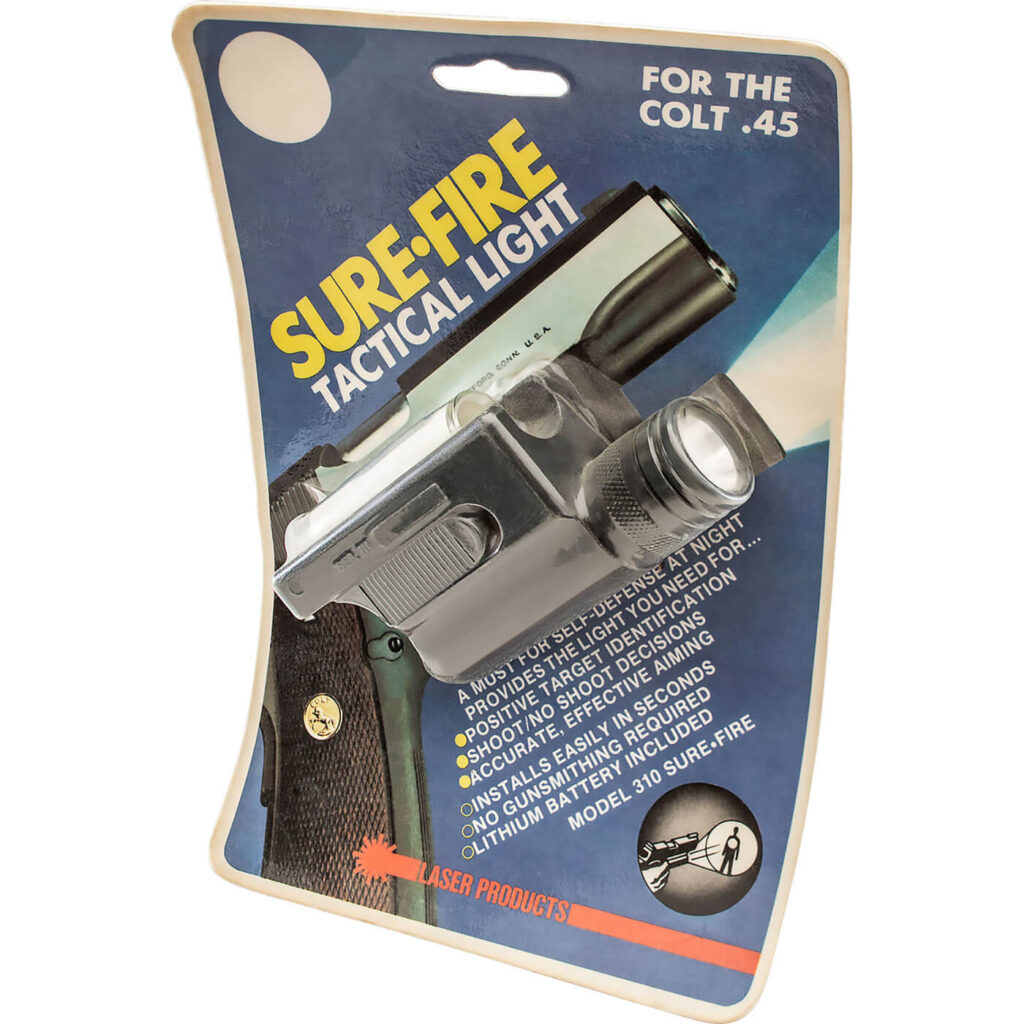
Advertisement — Continue Reading Below
The light looks hefty, and at six ounces, it’s not quite lightweight. Still, for the era, it wasn’t a boat anchor. Prepare to be blown away! The 310 packed a mighty 15 lumens! All that power came from a single 3-volt lithium battery. The light is attached via the slide stop. Users have to remove and replace the slide stop with the Laser Products Slide Stop and pin to hold the body to the light.
Once installed, there wasn’t a reason to remove it. It was maintenance-free, and batteries were swapped out at the front of the light. The LPC 310 provided a set of ambidextrous controls: ambidextrous sliding levers. Pressure had to be maintained on the switch to keep the light on. The light essentially had a momentary only design. Two hands were required to operate the light and to fire the weapon.
Lighting Up the Future
The LPC Model 310 became a huge seller. It was a massive success for Laser Products Corporation. The next project became an integrated light for the Remington 870, then another for the MP5, and that created a shift. Laser Products Corporation became SureFire. The weapon-mounted light was a side project of a company that produced laser aiming systems, but that changed their prerogative.
Advertisement — Continue Reading Below

Weapon-mounted lights were no longer a side project. They became a primary goal for SureFire. These days, the company produces its own lamps, which led to handheld lights, headlamps, and more. In 30 years, the 15-lumen LPC 310 became the SureFire X300U, which packs 1,000 lumens of power. These days, Surefire remains the dominant weapon light company with extensive police and military users as well as a ton of civilian users.
It all started with one little light.
Advertisement — Continue Reading Below

